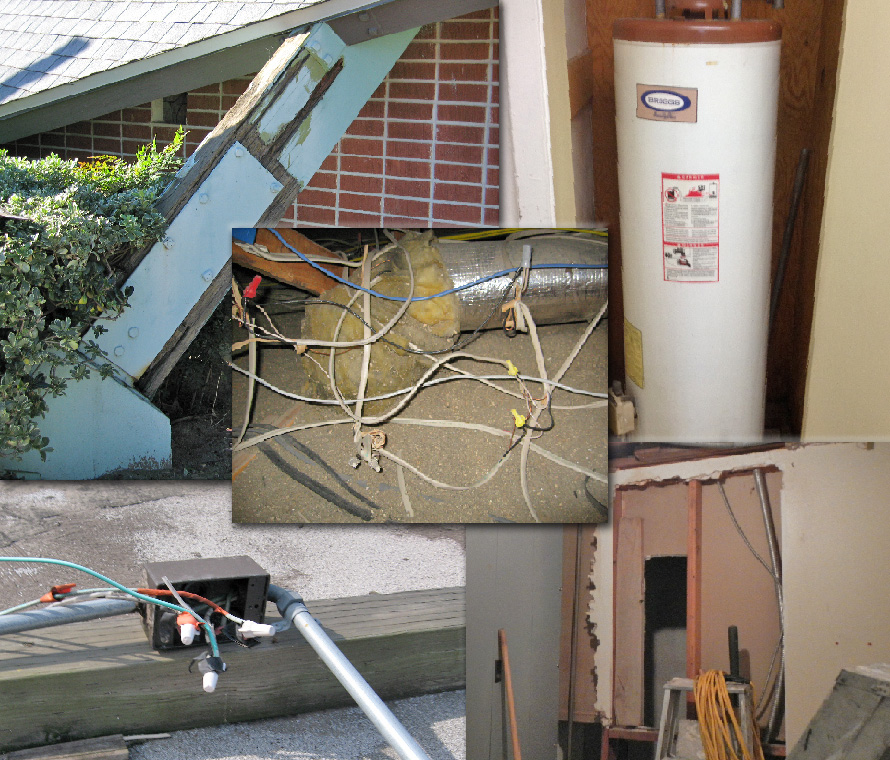
First and foremost, to know which disclosures apply, we must define the difference between residential and commercial real property in California. Although most municipalities define the different types of properties in their zoning code, the general definitions used are essentially the same. Residential properties are generally those with one to four dwelling units, such as a single-family house or duplex. Although there are some nuances for mobile homes, and vacant land, for purposes of this article, commercial property is everything that is not residential property, including residential property consisting of more than four dwelling units, such as apartment complexes.
Required Disclosures:
By law, there are several disclosures that must be made in every sale or exchange of real property. California imposes certain statutory disclosure obligations on the part of the sellers, including: 1) whether the property is located in one of several hazard areas, including a “special flood hazard area,” “potential flood areas,” “very high fire hazard severity zones,” “earthquake fault zones,” “seismic hazard zones,” or “wildland areas”; 2) Environmental hazards; 3) a California Department of Real Estate prepared booklet regarding hazardous substances; 4) Certification of strapping of hot water heaters; 5) Disclosure if the seller is a foreign person; 6) Delivery of earthquake guide for commercial property; and 7) if the Property’s location within airport influence area.
More recently, California now requires the seller of commercial property greater than a particular square footage to provide information on a building’s energy use and consumption information which includes: 1) energy usage data from the prior twelve months: and 2) the building’s Energy STAR performance score.
What should be Disclosed:
California law requires sellers to disclose, in writing, material facts about the property that may affect its desirability or the amount the potential buyer is willing to pay, including latent, (hidden) defects. A seller may be found liable for the failure to disclose if: 1)the seller knows or has reason to know of the defect; 2) the defect is not apparent and the seller knows the buyer is unlikely to discover it upon an ordinary inspection; and 3) the defect is serious and would likely cause a buyer to reconsider the purchase.
In general, Material facts frequently involve information concerning the property’s walls, ceiling, floors, insulation, roof, windows, doors, foundation, driveways, sidewalks, fences, electrical systems, plumbing systems, or other structural components. This is not a complete list, as any fact concerning any part of the property can be a material fact if it affects the property’s value, desirability, or ability to be used as intended.
General disclaimers that the property is being sold “as-is” are not sufficient to overcome fraud, concealment, or failure to disclose material defects by the seller. “As-is” does not mean a seller or agent can use those words to escape liability. Material defects must still be disclosed to buyers and if they elect to purchase the property anyway, the purchase is “as-is” with the know defects.
Failure to Disclose:
California law provides that “where the seller knows of facts materially affecting the value or desirability of the property which are known or accessible only to him and also knows that such facts are not known to, or within the reach of the diligent attention and observation of the buyer, the seller is under a duty to disclose them to the buyer…Failure of the seller to fulfill such duty of disclosure constitutes actual fraud.” Lingsch v. Savage, 213 Cal. App. 2d 729, 735, 29 Cal. Rptr. 201, 204 (Ct. App. 1963).
A lawsuit for damages for fraud based on nondisclosure are: 1) nondisclosure by the defendant of facts materially affecting the value or desirability of the property; 2) Defendant’s knowledge of such facts and of their being unknown to or beyond the reach of the plaintiff; 3) Defendant’s intention to induce action by the plaintiff; 4) inducement of the plaintiff to act by reason of the nondisclosure; and 5) resulting damages. Id. at 738, 29 Cal. Rptr. at 206.
As per California Civil Code §3343, one defrauded in the purchase, sale or exchange of property is entitled to recover the difference between the actual value of that with which the defrauded person paid and the actual value of that which he received, plus any additional damage arising from the particular transaction…
Conclusion:
A buyer may only hold a seller responsible for failure to disclose a known defect if the buyer would not have discovered the defect even after conducting a reasonable, independent inspection. Thus, for the buyer to bring a legitimate failure to disclose claim against the seller, the defect(s) cannot have been readily visible or observable.
To avoid liability, the seller must reveal all true facts as to the condition of the property, especially those that are not otherwise visible or observable upon inspection.
Please see our other related articles
Clouds on Title
Church Officer and Director Liability
Holding title to Property
The Escrow Process
Why Use Bushore Real Estate
Disclaimer: Every situation is different and particular facts may vary thereby changing or altering a possible course of action or conclusion. The information contained herein is intended to be general in nature as laws vary between federal, state, counties, and municipalities and therefore may not apply to any given matter. This information is not intended to be legal advice or relied upon as a legal opinion, course of action, accounting, tax or other professional service. You should consult the proper legal or professional advisor knowledgeable in the area that pertains to your particular situation.
